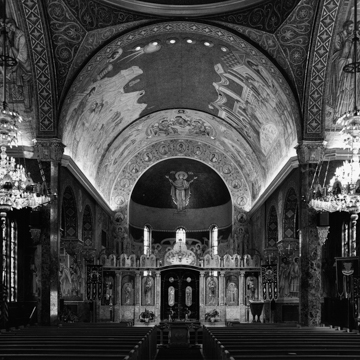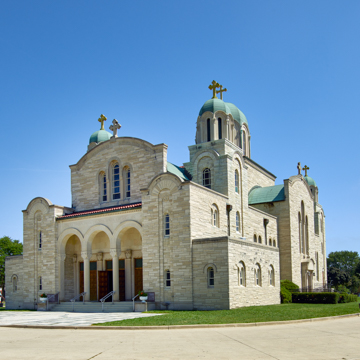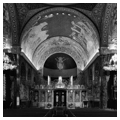St. Sava Serbian Orthodox Cathedral is one of Milwaukee’s newer churches, but it represents a thousand-year-old architectural tradition. The stone building is a modern rendition of Byzantine church forms. Domes are the architectural focal point of Byzantine churches, and St. Sava’s Greek cross plan has five copper-clad domes on tall windowed drums. Other Byzantine features include the tall, thin-arched, or curving exterior elements that repeat in the narrow windows and the entrance portico. Since Eastern Orthodox tradition eschews three-dimensional carved statues, the exterior is rather plain. Inside are stunning mosaics designed and installed beginning in 1965 by Chicago glass mosaic artist Sirio Tonelli, who worked thirty years on the mosaics. The images follow the usual Byzantine hierarchy showing Jesus in the main dome and Mary in the semidome on the apse, biblical figures below and saints closest to the pews. An iconostasis separates the clergy from the laity, continuing the use of screens employed for several centuries in Western churches.
You are here
St. Sava Serbian Orthodox Cathedral
If SAH Archipedia has been useful to you, please consider supporting it.
SAH Archipedia tells the story of the United States through its buildings, landscapes, and cities. This freely available resource empowers the public with authoritative knowledge that deepens their understanding and appreciation of the built environment. But the Society of Architectural Historians, which created SAH Archipedia with University of Virginia Press, needs your support to maintain the high-caliber research, writing, photography, cartography, editing, design, and programming that make SAH Archipedia a trusted online resource available to all who value the history of place, heritage tourism, and learning.





